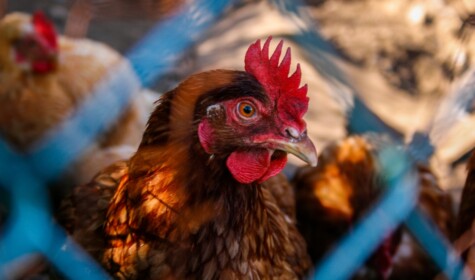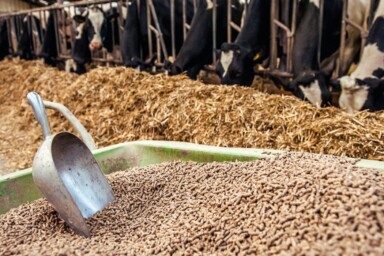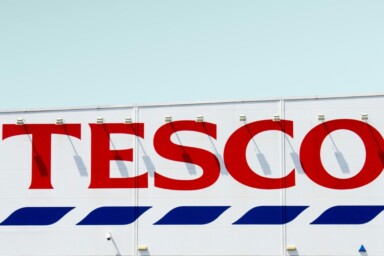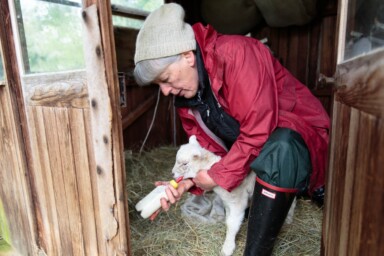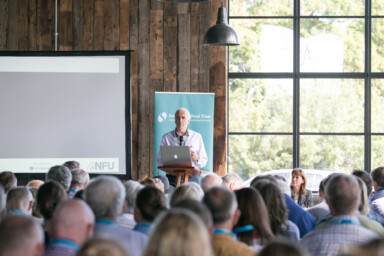As I write, we’re on Day Four of eating up a two-kilo chicken. Day One, we ate the crispy skin – glorious! – the wings, drumsticks, thighs, ‘oysters’, a sliver of breast, and the caramelised juices from the roasting pan along with roast potatoes and vegetables. Day Two was time to make Caesar Salad with the leftover breast, just add croutons, cos lettuce and an easy dressing made with mayonnaise, parmesan and a few anchovy fillets. Day Three, I boiled the carcase for stock. Day Four, with the addition of leek, carrot, celery, mushy tomatoes, broccoli stems and a handful of barley, I have a pot of soup that will serve eight people.
About once a month, I gulp when I pay £24 or thereabouts for my bird, which justifies its steep price tag because it is reared to the strictest legal ‘traditional’ and truly free-range standard, a slow-maturing variety fed on pasture and cereals, killed at 81 days.
When I do the final calculation, I have got six main course portions and eight starters/lunches from it, an economical proposition by any standard.
I could, of course, have bought the most basic grade of supermarket bird – a fast-growing specimen, miserably reared indoors, for as little as £1.56 a kilo. That’s about eight times less than I pay.
When chicken is this cheap, you can see why it has become the UK’s most popular animal protein, accounting for more than half of all the meat we eat. But price is only part of the reason why we consume so much of it.
Chicken sales have benefited from the relentless propaganda war against red meat, as a result of which, some consumers have been persuaded on the basis of selective and misrepresented data, that chicken is a better choice for planetary, animal and personal health. “I don’t eat red meat, but I do eat chicken sometimes.” How often have you heard that said?
Superficially, that stance might seem enlightened, but the reality is that in this country, UK or EU reared red meat from truly sustainable, pasture-based systems will almost always be a more genuinely progressive choice than chicken.
UK-reared beef, lamb, goat and venison is produced more extensively than chicken (and pork, for that matter). Sheep, cattle and other ruminants are rarely raised exclusively indoors in Britain. Farmed deer are still in the field for the best part of their lives. These animals live on a diet of mainly pasture and forage, making use of land that is often unsuitable for growing other crops. They can flourish eating grass, herbs and shrubs, effectively transforming sunlight, rainwater and soil nutrients into some of the most nutrient rich foods available to us.
While many UK-reared cattle are now finished on a diet that includes some cereals, they typically spend the greater part of their lives grazing outside, and for people seeking the most sustainable meat option, produce from 100% grass-fed animals is available. The more cereals that are fed to an animal, the less resource efficient its milk or meat is. This is because productive arable farmland, that could be used for growing food to be fed directly to people, is used for growing lower grade livestock cereals, from which only 17-30% of calories are returned for human consumption as meat or milk. Alternatively, the cereals used for animal feed may be grown in other regions of the world and shipped vast distances – which brings us back to chicken.
We eat a billion chickens each year in these isles, and they do not lead remotely content or natural lives. Almost all (95%) are from fast-growing breeds, intensively reared in vast, tightly packed, indoor facilities and they are slaughtered at as little as 28 days.
While chickens are a relatively small bird, their environmental footprint is significant. The Soil Association’s report, Peak Poultry, details that roughly three million tonnes of soya are imported into the UK each year, and most of it is bought by chicken producers to fatten chickens. Typically, this soya comes from Latin America, a crop that contributes to deforestation and pesticide use in biologically important areas, such as the Amazon and Cerrado.
There are at least 1,000 intensive poultry units throughout the UK. This marks an increase of more than 30% in the past decade as chicken has been marketed as a more compassionate, healthy and ecological alternative to red meat.
Given the complexity of the debate, it’s no wonder that so many of us accept that chicken is a more ethical choice. Put chicken on the menu, whether that’s in school dinner halls or restaurants, and you are likely to invite fewer religious objections, while ‘flexitarians’, and those who describe themselves as ‘plant-based’ eaters will view it as ‘the least bad’ of the possible meat options.
Chicken has become the meat department’s crowd-pleaser. Along with low procurement costs, this has made it ubiquitous – takeaway chicken in sandwiches and salads; chicken every which way in supermarket ready meals; and endless deep-fried fast food chicken parlours.
The supposed virtuosity of chicken draws plausibility from its colour, its very paleness. Red meat connects us psychologically to blood and death, while ‘white meat’ can be more easily disassociated from it. Diverse populations outside the Anglosphere accept the slaughter of animals by humans as an integral part of the natural food production systems that have sustained them for millennia.
The more industrialised and prosperous we have become, the more we are disconnected from farming and nature, and a modern distaste for red meat has become common. To the queasy Brit, already prone to anthropomorphising animals, a chicken smacks less of the abattoir than meat that is ‘red in tooth and claw’.
‘Eco-modernists’, Silicon Valley venture capitalists, tech-driven trans-humanists and assorted laptop activists, work hard to shut down global animal farming, evoking the very worst case production scenarios they can find. Commonly, they whip up sentiment against livestock farmers using arguments based on farm size, production methods and consumption patterns in places – usually the US – that are unrepresentative of most practice in the UK and Europe. While doing so, they typically demonstrate a failure to grasp the complex interactions between soil, plants, animals and people that form the basis of truly healthy, sustainable food and farming systems.
But given how deeply embedded chicken is in the traditional culinary habits and food security of cultures around the world, the goal of eventually terminating its consumption looks doomed.
The anti-red meat critique does have consequences in that it impacts the livelihoods of farmers, and very possibly undermines the nutritional health of the nation by directing us away from this nutrient-dense food that is perfectly suited to the UK’s ample grassland. But people who have fewer choices about what they can afford to buy, will inevitably rely on chicken as a staple because its cost is seemingly so low. Of course, what’s not reflected in checkout prices are the hidden costs to the consumer of our industrial food system because of the damage it does to our health and environment. These costs eventually end up being paid for by the public in the form of taxation to redress environmental harm or lost income owing to health issues.
To effectively address the profound animal welfare and environmental problems associated with intensive chicken systems, we need to work on getting people to eat chicken raised with the highest standards of welfare from agroecological farming systems.
Harvey Ussery, pioneer farmer and author of the newly-updated seminal manual, The Small-Scale Poultry Flock, has set out what he calls “an all-natural approach” to raising chickens for home and market growers. He has spent his life developing a truly viable poultry model that sequesters carbon and is hygienic, neighbour-friendly and food-secure; like him, many smaller-scale poultry producers and farmers throughout the UK have developed agroecological chicken systems that work for them.
Compassion in World Farming (CIWF) is trying to get supermarket chains on board with its Better Chicken Commitment, but, so far, the reaction from different retailers has been mixed. However, as CIWF has contested, “Without a change of breed – away from fast-growing birds that suffer a variety of unacceptable health and welfare issues – the systems adopted by the Coop and Sainsbury’s simply cannot be considered higher welfare.”
A cynic might observe that while large retailers like to boast in the vaguest of terms about ‘better’ chicken, they routinely pass on the financial burden for the additional costs of improvements in all their products to their suppliers.
And as Harvey Ussery makes clear, when we consider how to rear chickens in a way that produces flavoursome meat, from a content bird, in a manner that does not harm the environment (and even helps it), it boils down to keeping birds in conditions that “more closely emulate the ecology in which they evolved”.
Such a shift in raising chickens won’t be instigated within the supermarket system because the big retailers are only interested in large consignments of birds from a handful of companies. But the change is already coming from farmers with smaller flocks, independent butchers and the people behind market stalls, who focus on a more localised chicken food chain. Examples of good practice are already flourishing in organic and agroecological enterprises.
And like my monthly purchase, a chicken from such a system won’t be cheap. But it can still be rewarding to farm, a special pleasure to eat and, when we use every possible part of it, really good value for money.
